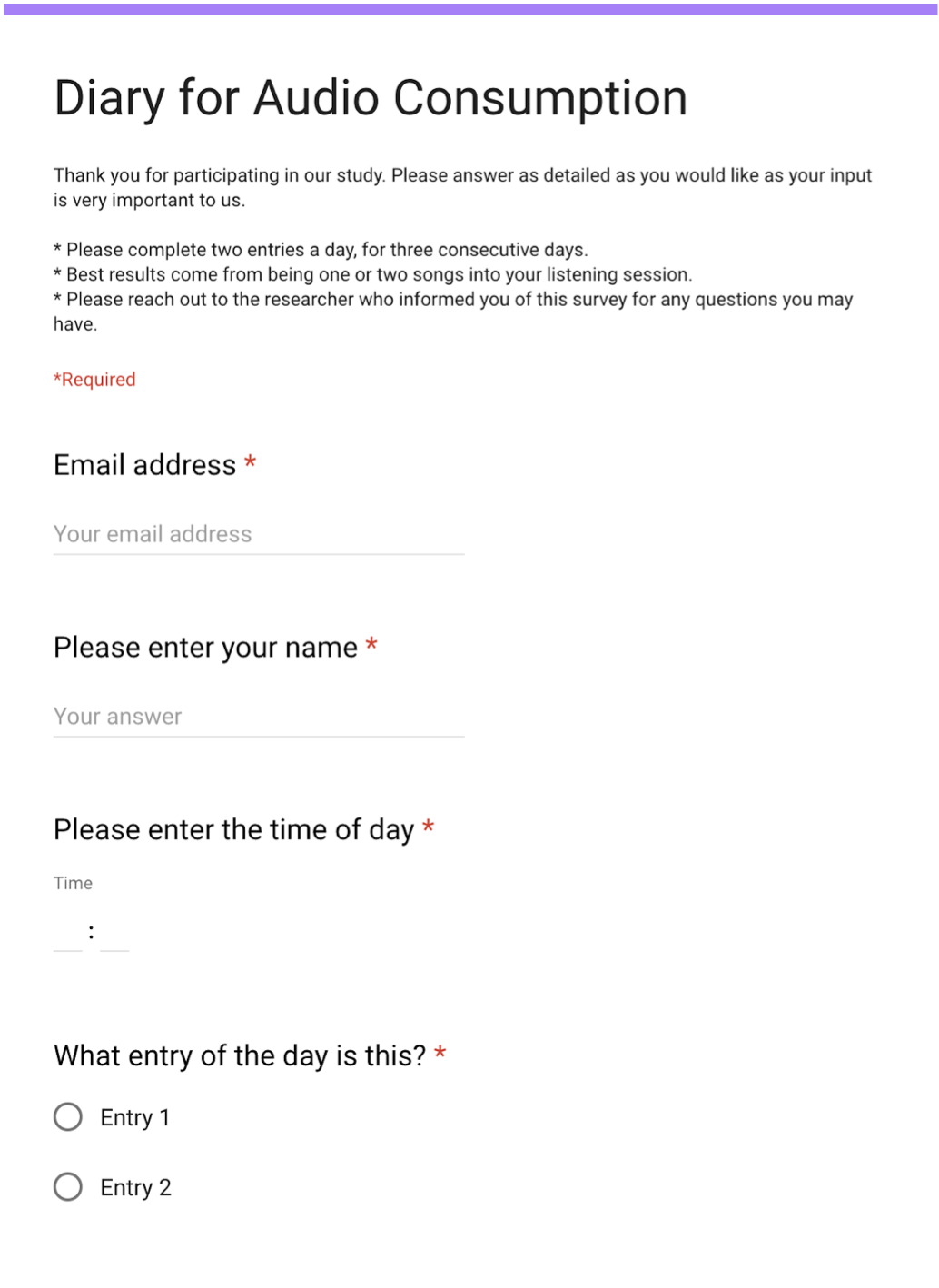Diary Study - Keeping an Ear Open
Completed by James Koutrakos, Christian Tymec, Lucas Lazdins
Project Timeline - October 2019 to December 2019
Context - Humber College, Post Graduate Certificate Program, Course Assignment
Project Overview
This project was created with the goal of collecting participant data to find themes that will set a new foundation for Company X, a music streaming company, to explore.
The data collected could inspire innovation and potentially create new ideas for Company X to use to create a competitive advantage, but the purpose of this project is to look at the findings inconclusively.
Research Question
We developed a question to have a starting point for our data.
When trying to combat, enhance, or realize a current feeling or mood, what types of audio media are people consuming and why?
The Process
Data Collection - Survey
Participant Instructions
Fill out the form at least 2x per day, over the course of any three consecutive days. Entries must be completed directly before, while consuming, or directly after making a choice to consume a form of audio-media (i.e. music, podcast, audiobook, guided meditation, etc.)
Sampling Frequency
Diary entry must be submitted 2x a day, for 3 days, at the participant’s will, during, or directly after they are consuming ANY type of audio media (music, podcasts, audiobooks, guided meditation).
Participant Responses
We created our study to avoid biased research, yet some participants mentioned a lack of direction, which posed some challenges to our findings. Not giving a template answer for participants to use led to these challenges that they exhibited.
Affinity Diagramming
Emergent Themes
Through the process of affinity diagramming, we found and labelled the themes we found most prevalent from our findings.
Music used to maintain a feeling
Participants used music for much more than just entertainment for their ears. Research shows participants were also using music to improve or sustain a positive feeling they were currently experiencing.
Discovery
Participants had certain selections that were driven by external sources. That being direct recommendations like a friend’s suggestion, and indirect recommendations like the radio’s current playing rotation.
Background Noise
Participants would fill both empty noise and time where there is no current task to complete by listening to music. They used music as a way to add colour to otherwise bland scenarios (i.e. commuting to work, showering, waiting alone for a table at a restaurant).
Breaking Away from the current Situation
Participants would treat music as a temporary escape in order to alter their present mood or feelings.
Task Oriented Use
Participants used music for focus and for literal use of the music itself. Some listened to meditating, low-fidelity beats that encouraged focus, while one participant listened to music for the intent on learning music, literal use.
Reflections
As a team of researchers, we learned that conducting a diary study requires a lot of working with and paying attention to your participants. Some of them will inevitably drop off partway through. Some of these entries still provided valuable research for us to use, however this defeated the purpose of understanding the nuances and habits of one person who is repeatedly reporting to you.
Some of our participants mentioned that they weren’t really sure what to report on because they weren’t given enough direction. Obviously, this was done on purpose because we were not trying to lead our research in anyway.
Additionally, Google Surveys was an effective way to conduct this type of research -- because it did not allow our participants to submit entries without filling all of the forms, and we relied on the cloud for us to all receive and review the entries as they came in.





